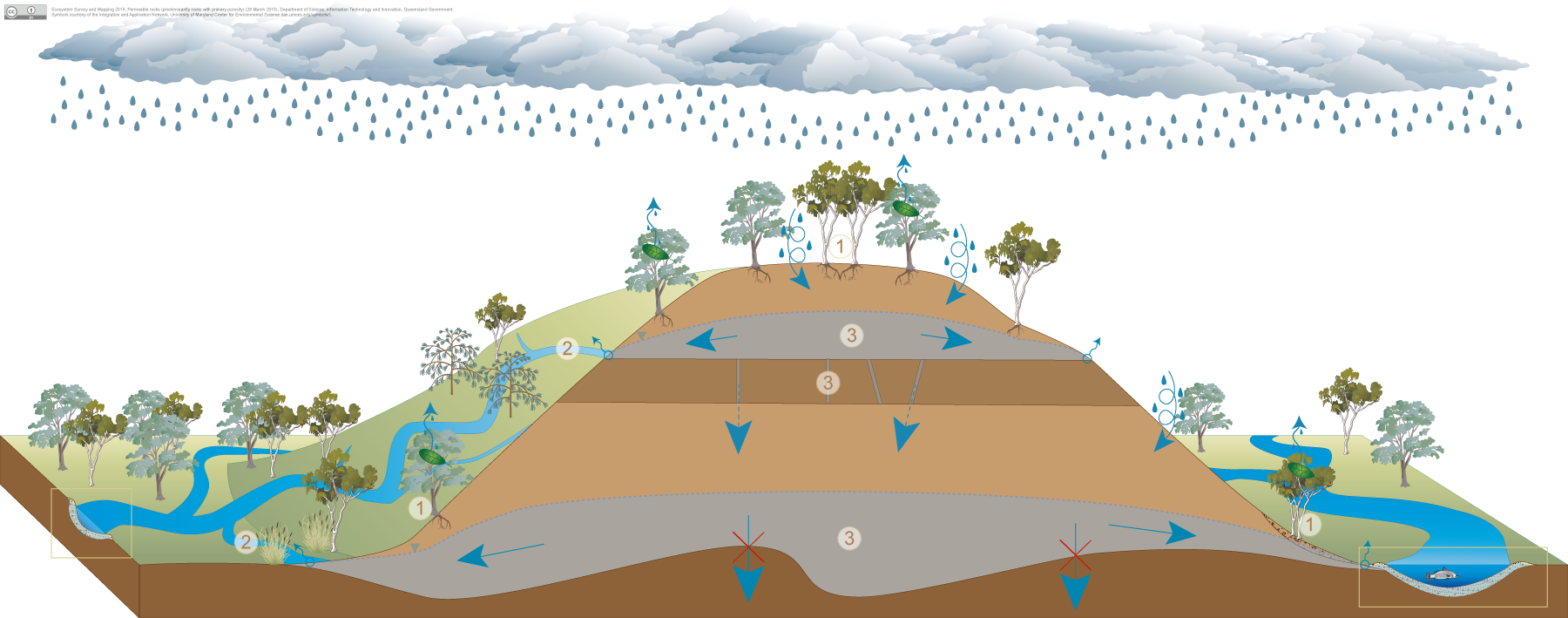|
|
Permeable rocksPermeable rocks
Click on elements of the model or select from the tabs below Permeable rocks can contain one or more unconfined, permeable rock aquifers, where groundwater is stored and transmitted through intergranular pore space, fractures, vesicles and/or weathered zone of the rock. When permeable rocks overlie relatively less permeable or impermeable rocks vertical groundwater movement is restricted. While groundwater will often continue to leak through the less permeable rock to some degree (e.g. through fractures), typically, groundwater moves laterally and is commonly discharged to the surface along the contact between the two rock types. Unconfined, permeable rock aquifers may provide a range of ecosystems with water required to support their plant and animal communities, ecological processes and delivery of ecosystem services.
This discharge of groundwater along the contact between two rocks may also support nearby channels, alluvium and associated aquatic ecosystems through prolonged flow or groundwater recharge. Pictorial conceptual model PDF Additional links
Last updated: 18 December 2015 This page should be cited as: Queensland Government, Queensland (2015) Permeable rocks, WetlandInfo website, accessed 8 May 2025. Available at: https://wetlandinfo.des.qld.gov.au/wetlands/ecology/aquatic-ecosystems-natural/groundwater-dependent/permeable-rocks/ |

 — Department of the Environment, Tourism, Science and Innovation
— Department of the Environment, Tourism, Science and Innovation

